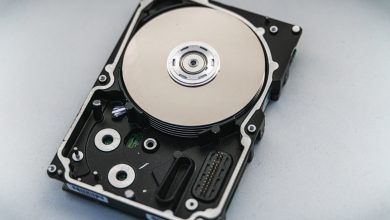
Within the industrial technological environment, it is understood as “state of the art”, “state of the art” or “state of the question”, all those latest technology developments made to a product, which have been tested in the industry and have been hosted and accepted by different manufacturers. We will also take the opportunity to comment on some popular platform video games, as well as well-known video game development environments and frameworks.
Video game
The video game industry is a relatively young industry, it has its origin in the 1940s when after the end of the Second World War, the victorious powers built the first programmable supercomputers. The first programs of a playful nature did not take long to appear (initially chess programs), but it was not until the 1960s that we found the first modern video games. Since then, the world of video games has not stopped growing and developing, with the only limit imposed by the creativity of developers and the evolution of technology. Born as an experiment in the academic field, video games managed to establish themselves as a mass consumer product in just ten years, exerting a formidable impact on the new generations who saw video games with a new audiovisual medium that would allow them to star in their future. Own stories despite his youth, he has experienced extraordinary growth and total industry revenue worldwide is estimated at $93,282,000,000 for 2013 (Source: Gartner, October 2013). The platforms on which we can find video games are currently very varied, we have arcade machines, consoles, portable consoles, computers, laptops, tablets and mobiles.
Platformer video game
Platform video games or, simply, platforms, are a genre of video games that are characterized by having to walk, run, jump or climb on a series of platforms and cliffs, with enemies, while collecting objects to complete the game. The genre was born in the 80s and as a pioneer of the genre we find the mythical Donkey Kong (Nintendo, 1981), the game mechanics focus on controlling the character on a series of platforms while avoiding obstacles. Also in this same decade we find the extraordinary Super Mario Bros (NES, Nintendo, 1985), which introduced a series of elements to the platform genre that would set a precedent: the collection of 100 items to get extra lives (in this case, coins), and the division into the south-levels of the worlds.
The genre has continued to evolve over the years passing through migration towards three dimensions, however, recently sight in two dimensions has been recovered due to; lower development costs, the possibility of providing a more elaborate art section and the camera problems suffered by many 3D platforms.
Examples of this twist of the two dimensions are Super Meat Boy (2010, Team Meat), Sonic Generations (2011, Sonic Team) and FEZ (2012, Polytron).
Examples of platform video games
In the current market we find a lot of competition in platform video games, we will limit ourselves to mentioning the most noteworthy:
Super Mario Bros: the undisputed king of platform video games. The latest version of the video game is called New Super Mario Bros. U and was released in Europe at the end of 2012 and is exclusive to the Wii U console. One of the novelties introduced in the latest versions of the video game has been the ability for multiple players to participate in the game at the same time.
Game development tools
Development platforms
It is a programming environment that has been packaged as an application program; that is, it consists of a code editor, a compiler, a debugger, and a graphical interface builder, among other features. They are tools that provide a higher level of abstraction than a framework, here are some of the most popular for video game development:
Unity: is a game development ecosystem: a powerful, fully integrated rendering engine with a full set of intuitive tools and fast workflows for creating interactive 3D content; Simple multi-platform publishing and a Community where knowledge is exchanged.
UDK: it is the free version of Unreal Engine 3, it provides access to a set of professional tools used in large video game productions. It also supports mobile development, 3D rendering, animation movie creation, and more.
GameMaker: allows developers to create multi-platform video games. Allows you to export video games to: Android, iOS, HTML5, Mac, Windows, Windows Phone, among others.
Frameworks: In software development, a framework or digital infrastructure is a conceptual and technological structure of defined support, usually with artifacts or specific software modules, which can serve as a basis for the organization and development of software. Typically, it can include program support, libraries, and an interpreted language, among other tools, to help develop and unite the different components of a project. Normally, a framework allows us to develop a video game with a level of depth greater than a development environment. (source: software resources for android platforms)
Software Resources
Gliffy is a popular and cheaper alternative to Microsoft Visio. It is used primarily in software development, planning and documentation, business processes, and organization diagrams, with an emphasis on functional business charts such as diagrams, organization charts, and functional diagrams.
Eclipse Android Developer Tools Bundle v22.6.2-1085508 Eclipse ADT Bundle includes everything you need to develop Android applications:
- Eclipse + ADT plugin
- Android SDK tools
- Tools for the Android platform.
Eclipse
It is a computer program comprised of a set of cross-platform open source programming tools to develop what the project calls “Rich Client Applications”, as opposed to browser-based “Light-Client” applications. This platform has typically been used to develop integrated development environments (IDE), such as the Java IDE called Java Development Toolkit (JDT) and the compiler (ECJ) that is delivered as part of Eclipse (and that are used as well to develop the same Eclipse). However, it can also be used for other types of client applications, such as BitTorrent or Azureus. Eclipse was originally developed by IBM as the successor to its family of tools for VisualAge. Eclipse is now developed by the Eclipse Foundation, an independent non-profit organization that fosters an open source community and a set of complementary products, capabilities, and services.




